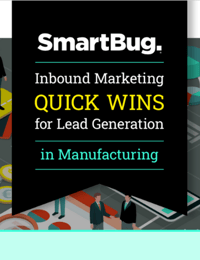
The idea, “if you build it, they will come,” may not ring true for marketing. Sure, you can build a great product or service, but if you don’t spend any time promoting it, will anyone come?
Brand awareness is the visibility and familiarity of your company. It’s an important (and sometimes forgotten) component of marketing. Efficient marketing isn’t solely about promoting the benefits of your product/service—it’s about the benefits of your organization, too.
You should help potential customers understand why they should continually choose to work with you instead of your competitors. After all, people don’t buy what you do, they buy why you do it, according to Simon Sinek.
Brand awareness helps you build brand loyalty among your customers. If you focus your marketing exclusively on increasing sales, your products will be seen as commodities. If (and when) a newer, cheaper, or more popular product hits the market, your customers have no reason to stay with your business.
The Importance of Building Brand Awareness
How do you build awareness of your brand? By telling a story.
The manufacturing industry, in particular, can be technical and complex. Taking the time to humanize your company and share your value proposition can provide peace of mind to prospective customers and create brand equity with existing customers that results in support for premium pricing or expansions of your product line.
For example, when you hear the phrase “the golden arches,” what business do you think of? McDonald’s has spent billions of dollars building its brand to make that phrase synonymous with its burgers so that the next time you hear about “the golden arches,” you think about eating a fast food burger at McDonald’s.
Brand awareness is crucial for companies of all sizes, not just those with billions of dollars. Smaller manufacturing businesses that focus on building a strong local brand identity have also been successful in resonating with customers. By providing the narrative for your brand, you can make your business top of mind when your current and existing customers think about manufacturing.
Inbound Marketing Tools that Can Improve Brand Awareness for Manufacturers
If you are already creating content, you can use the same inbound marketing tools to create a plan for improving your brand awareness.
Before creating this plan, you’ll need to know what needs improvement. You can gather baseline metrics so you can better understand your current market reputation using some of the tools below.
Website Data (Google Analytics)
Your website analytics are a great place to see what messaging is currently resonating with website visitors. You should have Google Analytics implemented on your website already, so you can dig into the data easily. How can you tell what messaging is working? Look at non-product pages where your visitors are spending the most time or the pages with the most views.
Keyword Analysis (SEMrush and Moz)
SEMrush, Moz, and other keyword analysis tools are great for understanding what keywords and concepts are driving visitors to your website (and your competitors). You want to create a story about your business that uses the phrases and sentiments that your visitors are familiar with. For example, if your website ranks high for “best manufacturing customer service,” your organization should focus on touting its customer service. If you’re not ranking high for anything other than your brand-specific keywords, then you have some work to do to bring awareness of your business to the market.
Social Listening (Buffer, BuzzSumo)
It’s also a good idea to look outside of your website and see what people are saying about your organization. Social listening tools are a great way to take a pulse of the conversations happening about your brand in social media channels. Use tools like Buffer and BuzzSumo to take stock of your brand’s strong points, as well as any negative critiques that you can directly address in your branding story.
Content Ideation and Creation (AnswerThePublic, Canva)
Once you understand where your organization’s brand awareness is currently, you can develop content, such as blogs and social posts, to craft your brand narrative.
Content that showcases your brand’s vision, purpose, and value proposition doesn’t need to be boring. You can incorporate your messaging into topics that your prospective and current customers are interested in. A tool like AnswerThePublic can provide ideas for manufacturing questions that your team can answer in a blog post that also promotes your brand.
For example, if you’re a manufacturing distributor, and you’ve written a blog post that answers the question, “Why should I work with a manufacturing distributor?” you can weave in brand messaging about why your company has the edge over other distributors.
For social posts, if you don’t have an in-house design team, you can easily create visually compelling graphics for social media using Canva (which also integrates with HubSpot). Don’t be afraid to showcase your company’s personality through the content you create.
Social Monitoring (Hootsuite, Google Alerts)
Once you’ve created content that supports your brand and promoted it to build brand awareness, it’s important to keep monitoring your brand’s position. You’ll understand how customers perceive you (positively if they’re engaging with your new content, or negatively if they ignore it).
Additionally through social listening, you can view questions that customers have about your company, which you can answer in future content pieces to improve your brand awareness. Hootsuite is a great way to monitor conversations across multiple social media platforms. You can also set up Google Alerts to get notifications whenever your company is mentioned.
Building brand awareness is a continuous process and should be a key component of any manufacturing company’s marketing strategy. If customers are unaware of your brand, they’re less likely to have the loyalty to stick with your business when competitors challenge your products and services. Luckily, you don’t have to start from scratch. Try using these inbound tools to take stock of your brand awareness and then start creating quality content to improve it.

About the author
Heather Quitos was formerly an Inbound Marketing Senior Specialist at SmartBug Media. She is dedicated to crafting persona-driven campaigns with career experience in B2B and software sectors. She has an undergraduate degree in journalism from the University of Wisconsin and received her master's in business administration from Marquette University. In her free time, you can find her trying new recipes in the kitchen. Read more articles by Heather Quitos.








